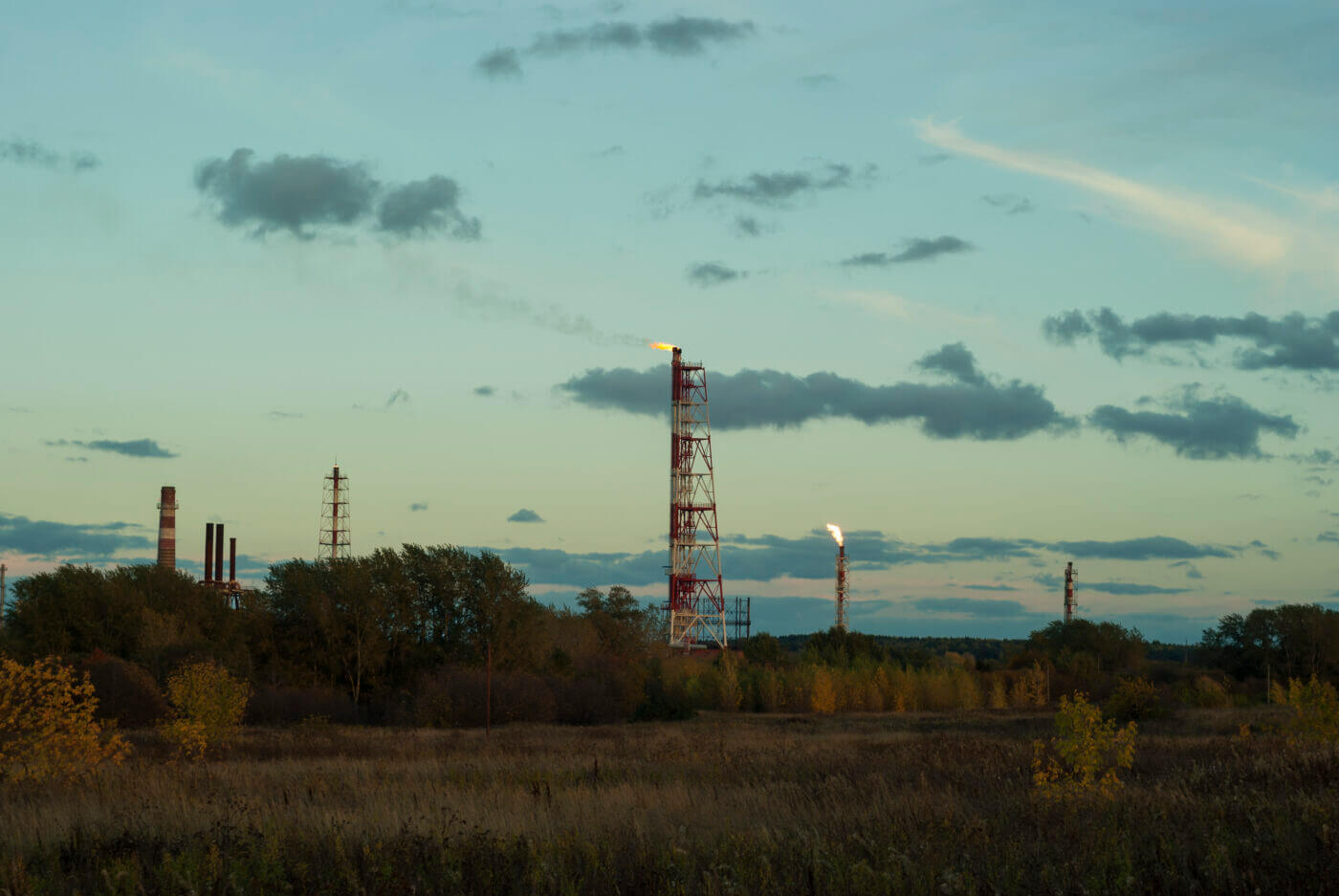
Hidden flares: How joint ventures can obscure accountability for dirty assets
International oil companies (IOCs) operate through a complex web of assets which can be classified as either operated or non-operated. While a company directly controls its operated assets, it does not manage day-to-day operations at non-operated assets – commonly structured as non-operated joint ventures (NOJVs) – which involves a consortium of companies holding varying financial stakes with one company serving as the lead operator.
Despite profiting significantly from non-operated assets, companies often exclude environmental impacts at NOJVs from their sustainability commitments. This omission leads to underreporting of significant amounts of methane, carbon dioxide, and other pollution and obscuring a company’s true climate and public health impact.
Clean Air Task Force (CATF) conducted a novel analysis to address this accountability gap for one significant source of pollution: flaring – the harmful and wasteful practice of burning gas during oil extraction. CATF’s analysis highlighted flaring from 10 of the world’s largest IOCs using satellite observations from the World Bank/Visible Infrared Imaging Radiometer Suite (VIIRS) and asset ownership data from Rystad Energy. The findings, published in CATF’s Flaring Accountability report, assign flare volumes to companies based on their ownership stakes, regardless of whether they have operational control. This approach provides a more comprehensive and accurate representation of each company’s flaring footprint.
To highlight the issue, this blog post examines Azule Energy, a company that exemplifies the challenges of accountability in NOJVs, and outlines opportunities for improving transparency and reducing flaring globally.
Unravelling Azule Energy’s flaring responsibility in Angola
Oil and gas operations in Angola flared over 1.8 billion cubic feet of gas in 2023, making it the 15th highest flaring country in the world. Azule Energy is the largest oil producer and second largest gas producer in Angola. The company was formed in 2022 as a 50:50 joint venture between BP and Eni, and all its operations in Angola are joint ventures. Each of its assets shares ownership with Sonangol (the national oil company of Angola), at least one other international oil company (e.g. Chevron, TotalEnergies, Equinor, ExxonMobil, Sinopec), and sometimes other Angolan/African oil companies (e.g. Etu Energias, Tende Energy).
In Flaring Accountability, we examined flaring practices among 10 major IOCs, including BP and Eni, Azule’s owners. In the report, 50% of Azule Energy’s total flaring volume was attributed to BP and 50% to Eni, ensuring transparency and accountability for each of its parent companies. However, it is also important to analyze Azule Energy’s responsibility for flaring in a broader context. The report identified three levels of influence that all companies have on flaring:
- Equity portion: This includes flaring at both operated and non-operated assets and apportions flare volume to each company based on percent ownership in the flaring asset. Azule Energy is responsible for 21% of flaring in Angola based on its equity ownership in flaring assets. Aside from Sonangol, the national oil company of Angola, Azule has the highest equity adjusted flaring in the country.
- Ownership influence: This accounts for the entire volume of flaring at assets where the company is involved and does not discount flaring volume by ownership percentage. Azule Energy has influence over 90% of flaring in Angola when accounting for flaring at all the assets in which it is involved.
- Partner multiplier effect: Companies can use their relationships to share flare reduction best practices and influence their partners to collectively advance projects and practices to reduce flaring. Azule Energy can have an impact on up to 93% of flaring in Angola through its partnership with Sonangol, the national oil company – nearly all flaring in the country takes place at assets that are partially owned by Sonangol.
By analyzing these different levels of influence, it becomes clear that Azule Energy – and its owners – bear significant responsibility for flaring activity in Angola and its associated risks to public health and the environment. It also underscores the substantial positive impact the company could have if it prioritized mitigation as a core responsibility.
International oil companies can and must positively influence their joint ventures and partners by collaborating with them to drive transparency and implement best practices for emissions reduction. BP and Eni have joined the Oil and Gas Methane Partnership 2.0 (OGMP 2.0) which considers joint ventures and requires members to report on non-operated assets. Azule Energy is also a member of OGMP 2.0, which means it reports its operated and non-operated assets in Angola, rather than BP and Eni (per OGMP 2.0 guidelines to avoid double counting). This demonstrates a shared commitment to measure methane emissions and inform mitigation and can serve as an example for other companies owning joint ventures.
At the same time, while Azule Energy’s independent member of OGMP 2.0, Eni and BP shouldn’t take advantage of that fact to avoid responsibility for action. Instead, the parent companies must still play an active role in ensuring that flare reduction commitments are established at these assets and are met.
Targeted actions can reduce flaring and improve transparency in NOJVs
To address these challenges, joint ventures like Azule Energy must:
- Enhance transparency: Fully disclose flaring volumes and reduction strategies – including setting targets and reporting on abatement efforts – at every operational level.
- Implement best practices: Use parent companies’ expertise to enforce effective flare management.
- Strengthen partnerships: Collaborate with national oil companies like Sonangol and other partners to advance emissions reduction projects.
- Prioritize investments: Allocate resources to gas capture and utilization infrastructure to eliminate routine flaring.
Azule Energy’s significant influence in Angola offers an opportunity to lead meaningful change. By leveraging its partnerships and operational scope, it can drive progress in flaring reduction and set a precedent for accountability. For BP, Eni, and other companies with non-operated joint ventures, the message is clear: ownership structures should not shield companies from responsibility but rather act as mechanisms to champion solutions.





